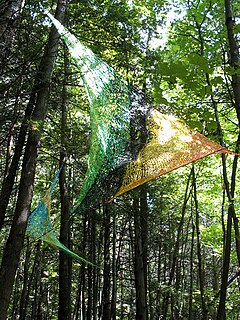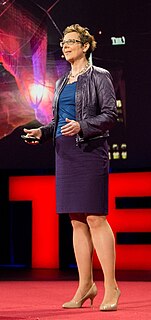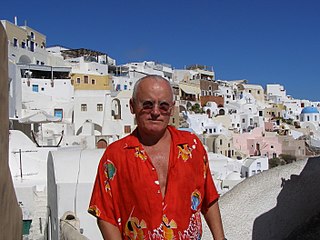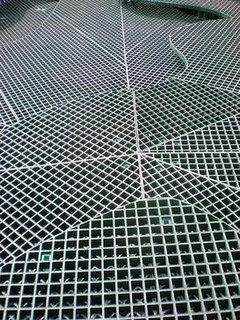

Sandworm (2012) is a site-specific art installation and a fusion of environmental art and architecture [1] by Finnish architect Marco Casagrande situated on the dunes of Wenduine beach in Belgium. The curvaceous structure is made entirely from willow. [2] The fifty-metre long organic structure stretches out between the dunes like an enormous wooden worm. It is part of the Beaufort Triennial of Contemporary art. [3]

Site-specific art is artwork created to exist in a certain place. Typically, the artist takes the location into account while planning and creating the artwork. Site-specific art is produced both by commercial artists, and independently, and can include some instances of work such as sculpture, stencil graffiti, rock balancing, and other art forms. Installations can be in urban areas, remote natural settings, or underwater.

Environmental art is a range of artistic practices encompassing both historical approaches to nature in art and more recent ecological and politically motivated types of works. Environmental art has evolved away from formal concerns, worked out with earth as a sculptural material, towards a deeper relationship to systems, processes and phenomena in relationship to social concerns. Integrated social and ecological approaches developed as an ethical, restorative stance emerged in the 1990s. Over the past ten years environmental art has become a focal point of exhibitions around the world as the social and cultural aspects of climate change come to the forefront.

Architecture is both the process and the product of planning, designing, and constructing buildings or any other structures. Architectural works, in the material form of buildings, are often perceived as cultural symbols and as works of art. Historical civilizations are often identified with their surviving architectural achievements.
The installation is an organic shell built from willow branches woven through arches of various heights placed at a length of 45 meters and a height and width of 10 meters. It falls within a local long tradition of willow weaving normally more modest in scale. [4] Sandworm has been created in an undulating shape upon the tidal beaches of Wenduine town. [5] From a distance, the mounds of tree remnants suggest the form of a massive creature, emerging out of the ground. Up close, visitors can investigate the textured surface of the structure, and they are invited to interact with the sculpture by walking through the interior. [6] The space is used for picnics, relaxation and “post industrial meditation”. [7]
Building on Monet’s beliefs that it is only the surrounding atmosphere that gives subjects their true value, Casagrande works in harmony with the air and light in this architectural piece. [8]

Meditation is a practice where an individual uses a technique – such as mindfulness, or focusing their mind on a particular object, thought or activity – to train attention and awareness, and achieve a mentally clear and emotionally calm and stable state.

Oscar-Claude Monet was a French painter, a founder of French Impressionist painting and the most consistent and prolific practitioner of the movement's philosophy of expressing one's perceptions before nature, especially as applied to plein air landscape painting. The term "Impressionism" is derived from the title of his painting Impression, soleil levant, which was exhibited in 1874 in the first of the independent exhibitions mounted by Monet and his associates as an alternative to the Salon de Paris.
Casagrande describes the work as “weak architecture” – a human-made structure that wishes to become part of nature through flexibility and organic presence. The visitors are describing the Sandworm as a willow cathedral finely tuned to celebrate the site specific conditions of the Wenduine tidal beaches. [9] As one visitor, Peter Beyen, puts it: “The artist believes that architectural control goes against nature and thus also against architecture… To the Finnish artist Marco Casagrande designing is not sufficient. Design should not replace reality. The building must grow out of the location, it must react to its environment, it must be a reflection of life and also be itself, as every other living being.” [10] Casagrande believes that the built human environment should be a mediator between human nature and nature itself. To be part of this, man must be weak. [11]

A cathedral is a Christian church which contains the cathedra of a bishop, thus serving as the central church of a diocese, conference, or episcopate. The equivalent word in German for such a church is Dom ; see also Duomo in Italian, Dom(kerk) in Dutch, and cognates in many other European languages. Churches with the function of "cathedral" are usually specific to those Christian denominations with an episcopal hierarchy, such as the Catholic, Anglican, Orthodox, and some Lutheran and Methodist churches. Church buildings embodying the functions of a cathedral first appeared in Italy, Gaul, Spain and North Africa in the 4th century, but cathedrals did not become universal within the Western Catholic Church until the 12th century, by which time they had developed architectural forms, institutional structures and legal identities distinct from parish churches, monastic churches and episcopal residences.















